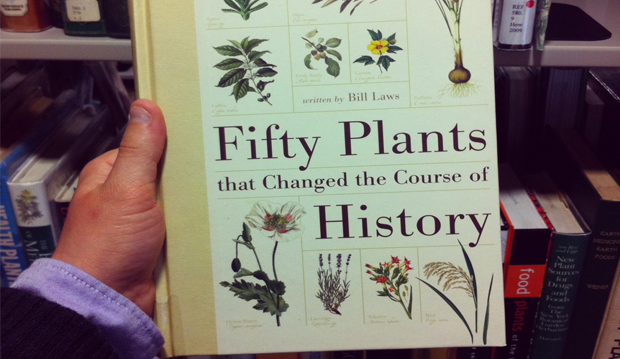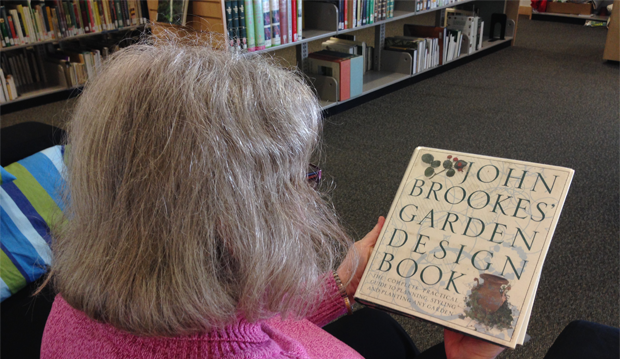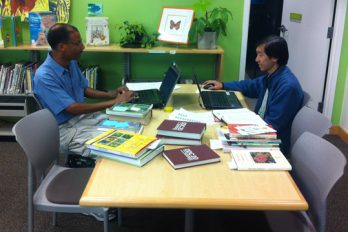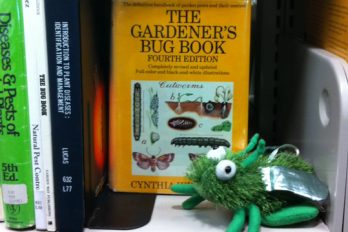“I have often been astonished at our indifference respecting the applause of those who have introduced useful plants into their country, the sight or fruit of which are to this day so delightful. The names of these public benefactors are chiefly unknown, whilst their benefits pass from generation to generation…”
– Dr. Robert John Thornton, Temple of Flora (1812)
As an undergraduate studying history, I was always intrigued to learn about inventions and human discoveries that changed the way we live. I am a product of our time, and often take for granted the readiness and accessibility of medicines, food products, guilty pleasures such as coffee or chocolate, and other commonly available items. The realization that most of these resources are derived from plants is awe-inspiring and the list is long. Cotton for clothing, rubber for tires, barley for beer, sunflower for oil, and so on.
“Ethnobotany” has been defined by Richard Ford (1994) as “the study of direct interrelations between humans and plants”* and the attempt to understand the meaning of plants within a culture. Due to the universal impact that plants have on people, and vice versa, ethnobotanical literature is varied with endless ways that these relationships can be explored.
The Weston Family Library includes many titles on the histories of native and invasive plant species, the role that plants played with imperialism and colonization, how humans have used plants in shaping world history, and other underlying themes of the indivisible relationship between plants and humans. I get excited when I find a book in our library on the micro-history of a type of plant and its impact on an event, people, or invention. On that note, here is a short list of titles from the collection that focus on the social and historical significance of plants:
- Beerling, David. The Emerald planet: how plants changed earth’s history. New York: Oxford University Press, 2007. (Main collection, 581.38 Bee)
This book discusses how plants have shaped our physical environment, climate, and biology throughout time. It speaks academically about the total history of plants, and their universal capacity to transform the planet.
- Coates, Peter. American perceptions of immigrant and invasive species: strangers on the land. Berkeley: University of California Press, 2006. (Main collection, 631.9 C57)
We know that the transportation of plants and animals to new habitats can have mixed results, bad and good. Within the context of human immigration, this title looks at invasive species introduced to the United States, and how these new plants have transformed ecosystems since the 1850s.
- Fara, Patricia. Sex, botany & empire: the story of Carl Linnaeus and Joseph Banks. Cambridge, UK: Icon Books, Ltd., 2003. (Main collection, 580.92 Far)
Sex, botany and empire investigates the ways in which Enlightenment-era explorers used botany to exploit native peoples and justify imperialism. Additionally, it discusses the role played by James Cook and Carl Linnaeus, with his controversial system of plant classification.
- Greene, Edward Lee. Landmarks of botanical history. Stanford, CA: Stanford University Press, 1983. (Main collection, 580.94 Gre)
In this classic work by Edward Lee Greene (1843-1915), readers are introduced to many international milestones in botanical history dating from classical antiquity to the eighteenth century. Topics include ideas on botanical philosophy, advancements in scientific knowledge, and accomplishments in the appropriation of plant derivatives for common use.
- Laws, Bill. Fifty plants that changed the course of history. Buffalo, NY: Firefly Books, 2010. (Reference collection, 581.6 Law 2011)
One of my personal favourites at the Weston Family Library, this is a very enjoyable and informative read that continuously draws me back for more. Fifty plants will expand your awareness of how humans have profited (developmentally, economically, medically, etc.) from plants throughout history, and what you learn might surprise you. Rubber, cinchona bark, barley, ferns, vanilla… the list goes on.
- Rupp, Rebecca. How carrots won the Trojan War: curious (but true) stories of common vegetables. North Adams, MA: Storey Publishing, 2012. (Main collection, 641.3 Rup)
This compilation of stories about the uses of vegetables and their historical significance is reminiscent of Freakonomics (2005). It is packed with entertaining and useful hypotheses, facts, and humour, with each chapter dedicated to a different crop.
- Stewart, Amy. Wicked plants: the weed that killed Lincoln’s mother and other botanical atrocities. Chapel Hill, NC: Algonquin Books of Chapel Hill, 2009. (Reference collection, 581.659 Ste)
Deadly, painful, dangerous, illegal, and intoxicating. These are descriptions and categories featured in Wicked plants. From the toxins used for poison-tipped arrows, to absinthe and killer algae, this book cleverly outlines the world’s wickedest plant species and their uses by humans throughout history.
Happy reading!
Zack Osborne, Head Librarian
*Ford, R.I.(1994). “Ethnobotany: historical diversity and synthesis”, in The Nature and status of ethnobotany. 2(nd) edition. Ford, R.I., ed.Ann Arbor: Anthropological Papers,Museum ofAnthropology,University ofMichigan No. 67. Pp. 33-49.




